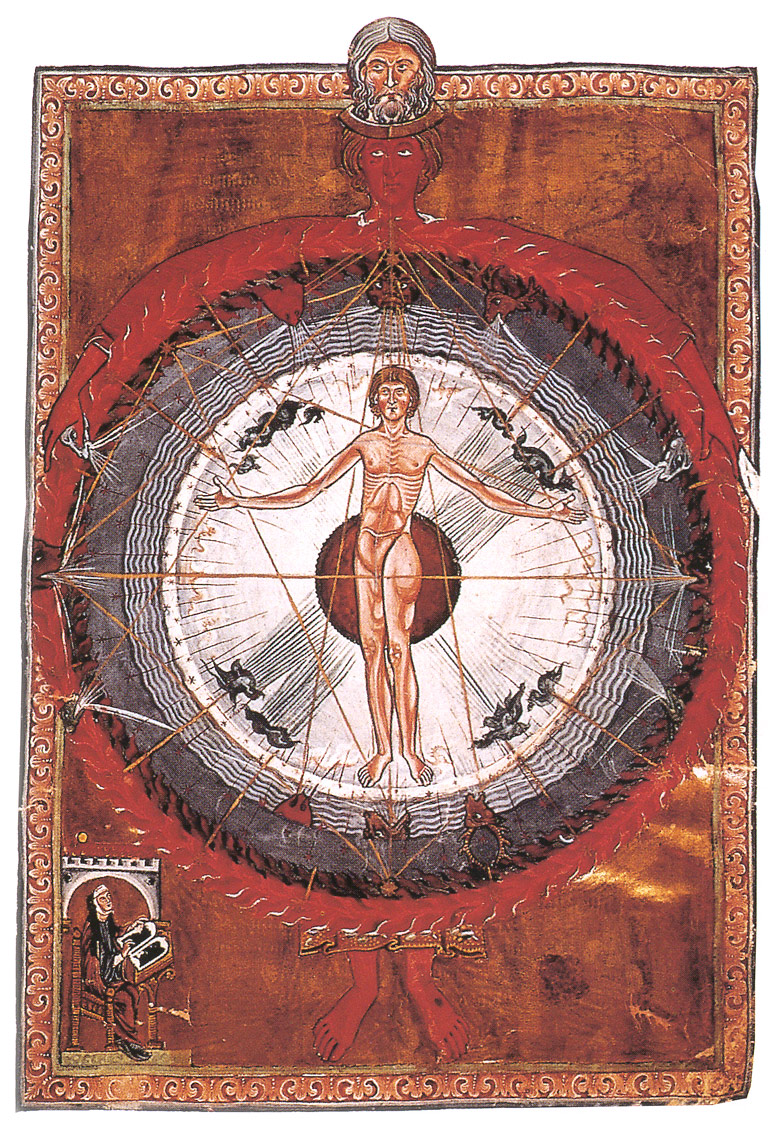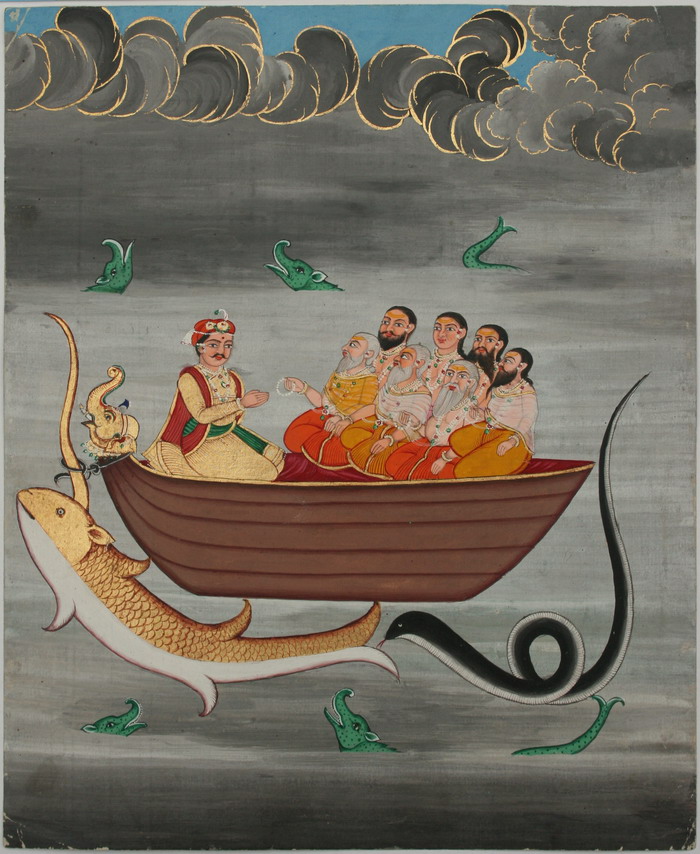|
Yamabushi
are Japanese mountain ascetic hermits. They are generally part of the syncretic religion, which includes Tantric Buddhism and Shinto. Their origins can be traced back to the solitary Yama-bito and some (saints or holy persons) of the eighth and ninth centuries. According to American writer Frederik L. Schodt: Clothing and items The Yamabushi usually wear and bring the following clothes and items with them: * Yuigesa (), a harness or sash adorned with pom-poms * Kyahan (), sandals made from straw * Tokin () which is a small hat-like adornment worn at the front of the head * Shakujō (), a metal rod, held in their hands * Oi (), backpack * Horagai (), a conch shell, which they blow like a horn to bind evil spirits See also * Cunning folk * Mount Ōfuna * Rishi * Shaolin Monastery Shaolin Monastery ( zh, labels=no, c=少林寺, p=shàolínsì), also known as Shaolin Temple, is a monastic institution recognized as the birthplace of Chan Buddhism and the crad ... [...More Info...] [...Related Items...] OR: [Wikipedia] [Google] [Baidu] |
Tokin (headwear)
The is a small, black, box-shaped hat traditional to Japan, which (mountain ascetic hermits) of wear on their foreheads. The has been worn since the Kamakura period (1185–1333) or the Muromachi period (1336–1573).(jaKotobank Kokugo-Daijiten(retrieved 09 June 2022) and The is one of the standard items which wear as a uniform. When practising in the deep mountains, they wear , a set consisting of upper robe and trousers, ''Yuigesa'' (), a harness or sash adorned with pom-poms on the body, (Buddhist Prayer beads) on the side, a on the head, ''Kyahan'' (), on the calves, sandals made from straw, hold ''Shakujō'' (), a metal rod, in their hands, wear ''Backpack, Oi'' (), a kind of backpack, and , a box borne on the shoulders containing prayers, paperwork and writing supplies, and blow a ''Horagai'' () (conch-shell horn). These sacred items may guard them from the Kami, malicious spirits, thus they are safe in the deep forests. This style was established in the Kamak ... [...More Info...] [...Related Items...] OR: [Wikipedia] [Google] [Baidu] |
Hericium Erinaceus
''Hericium erinaceus'', commonly known as lion's mane, ''yamabushitake'', bearded tooth fungus, or bearded hedgehog, is a species of tooth fungus. It tends to grow in a single clump with dangling spines longer than . It can be mistaken for other ''Hericium'' species that grow in the same areas. Native to North America and Eurasia, the mushrooms are common during late summer and autumn on hardwoods, particularly American beech and maple. It is typically considered saprophytic, as it mostly feeds on dead trees. It can also be found on living trees, usually in association with a wound. It is a choice edible mushroom and is used in traditional Chinese medicine, although its alleged medicinal benefits are not reliably proven. Etymology Both the Latin genus name and the species name mean 'hedgehog' in Latin. This is also reflected by the German name, (literally, 'hedgehog-goatee'), and some of its common English names, such as ''bearded hedgehog'' and ''hedgehog mushroom''. I ... [...More Info...] [...Related Items...] OR: [Wikipedia] [Google] [Baidu] |
Horagai
''Horagai'' () (or ''jinkai'' ) are large conch shells, usually from ''Charonia tritonis'', that have been used as trumpets in Japan for many centuries. The instrument, which has served a number of purposes throughout Japanese history, has been given a number of Japanese names depending on its function. Special schools still teach students to play the traditional music associated with the conch. Instrument Unlike most shell trumpets from other parts of the world which produce only one pitch, the Japanese ''hora'' or ''horagai'' can produce three or five different notes. The different pitches are achieved using a bronze or wooden mouthpiece attached to the apex of the shell's spire. At freezing temperatures (often encountered in the mountainous regions of Japan) the lips may freeze to the metal surface, so wooden or bamboo mouthpieces are used. Historical usage Religion The conch is used by Buddhist monks for religious purposes. Its use goes back at least 1,000 years, and it i ... [...More Info...] [...Related Items...] OR: [Wikipedia] [Google] [Baidu] |
Shugendō
is a syncretic Esoteric Buddhist religion, a body of ascetic practices that originated in the Nara Period of Japan having evolved during the 7th century from an amalgamation of beliefs, philosophies, doctrines and ritual systems drawn primarily from Esoteric Buddhism, local folk-religious practices, Shinto, mountain worship, and Taoism. The final purpose of ''Shugendō'' is for practitioners to find supernatural power and save themselves and the masses by conducting religious training while treading through steep mountain ranges. Practitioners are called or . The mountains where ''shugendo'' is practiced are all over Japan, and can span multiple mountains within one range such as the Ōmine mountain range with Mount Hakkyō and Mount Ōmine or the Ishizuchisan mountain range with Kamegamori and Tengudake. The ''Shugendō'' worldview includes a large pantheon of deities (which include Buddhist and Shinto figures). Some of the most important figures are the tantric B ... [...More Info...] [...Related Items...] OR: [Wikipedia] [Google] [Baidu] |
Religious Occupations
Religion is a range of social- cultural systems, including designated behaviors and practices, morals, beliefs, worldviews, texts, sanctified places, prophecies, ethics, or organizations, that generally relate humanity to supernatural, transcendental, and spiritual elements—although there is no scholarly consensus over what precisely constitutes a religion. It is an essentially contested concept. Different religions may or may not contain various elements ranging from the divine, sacredness, faith,Tillich, P. (1957) ''Dynamics of faith''. Harper Perennial; (p. 1). and a supernatural being or beings. The origin of religious belief is an open question, with possible explanations including awareness of individual death, a sense of community, and dreams. Religions have sacred histories, narratives, and mythologies, preserved in oral traditions, sacred texts, symbols, and holy places, that may attempt to explain the origin of life, the universe, and other phenomena. Reli ... [...More Info...] [...Related Items...] OR: [Wikipedia] [Google] [Baidu] |
Mysticism
Mysticism is popularly known as becoming one with God or the Absolute (philosophy), Absolute, but may refer to any kind of Religious ecstasy, ecstasy or altered state of consciousness which is given a religious or Spirituality, spiritual meaning. It may also refer to the attainment of insight in ultimate or hidden truths, and to human transformation supported by various practices and experiences. The term "mysticism" has Ancient Greek origins with various historically determined meanings. Derived from the Greek language, Greek word μύω ''múō'', meaning "to close" or "to conceal", mysticism came to refer to the biblical, liturgical (and sacramental), spiritual, and Christian contemplation, contemplative dimensions of early and medieval Christianity. During the early modern period, the definition of mysticism grew to include a broad range of beliefs and ideologies related to "extraordinary experiences and states of mind". In modern times, "mysticism" has acquired a limited ... [...More Info...] [...Related Items...] OR: [Wikipedia] [Google] [Baidu] |
Japanese Hermits
Japanese may refer to: * Something from or related to Japan, an island country in East Asia * Japanese language, spoken mainly in Japan * Japanese people, the ethnic group that identifies with Japan through ancestry or culture ** Japanese diaspora, Japanese emigrants and their descendants around the world * Japanese citizens, nationals of Japan under Japanese nationality law ** Foreign-born Japanese, naturalized citizens of Japan * Japanese writing system, consisting of kanji and kana * Japanese cuisine, the food and food culture of Japan See also * List of Japanese people * * Japonica (other) * Japanese studies , sometimes known as Japanology in Europe, is a sub-field of area studies or East Asian studies involved in social sciences and humanities research on Japan. It incorporates fields such as the study of Japanese language, history, culture, litera ... {{disambiguation Language and nationality disambiguation pages ... [...More Info...] [...Related Items...] OR: [Wikipedia] [Google] [Baidu] |
Ascetics
Asceticism is a lifestyle characterized by abstinence from worldly pleasures through self-discipline, self-imposed poverty, and simple living, often for the purpose of pursuing spiritual goals. Ascetics may withdraw from the world for their practices or continue to be part of their society, but typically adopt a frugal lifestyle, characterised by the renunciation of material possessions and physical pleasures, and also spend time fasting while concentrating on the practice of religion, prayer, or meditation. Some individuals have also attempted an ascetic lifestyle to free themselves from addictions to things such as alcohol, tobacco, drugs, entertainment, sex, food, etc. Asceticism has been historically observed in many religious and philosophical traditions, most notably among Ancient Greek philosophical schools ( Epicureanism, Gymnosophism, Stoicism, and Pythagoreanism), Indian religions (Buddhism, Hinduism, Jainism), Abrahamic religions (Christianity, Judaism, Isl ... [...More Info...] [...Related Items...] OR: [Wikipedia] [Google] [Baidu] |
Shaolin Monastery
Shaolin Monastery ( zh, labels=no, c=少林寺, p=shàolínsì), also known as Shaolin Temple, is a monastic institution recognized as the birthplace of Chan Buddhism and the cradle of Shaolin kung fu. It is located at the foot of Wuru Peak of the Songshan mountain range in Dengfeng county, Zhengzhou prefecture, in Henan province, China. The name reflects its location in the ancient grove () of Mount Shaoshi, in the hinterland of the Songshan mountains. Mount Song occupied a prominent position among Chinese sacred mountains as early as the 1st century BC, when it was proclaimed one of the Five Holy Peaks (). It is located some southeast of Luoyang, the former capital of the Northern Wei Dynasty (386–534), and southwest of Zhengzhou, the modern capital of Henan Province. As the first Shaolin abbot, Butuo Buddhabhadra devoted himself to translating Buddhist scriptures and preaching doctrines to hundreds of his followers. According to legend, Bodhidharma, the 28th patria ... [...More Info...] [...Related Items...] OR: [Wikipedia] [Google] [Baidu] |
Rishi
In Indian religions, a ''rishi'' ( ) is an accomplished and enlightened person. They find mention in various Vedic texts. Rishis are believed to have composed hymns of the Vedas. The Post-Vedic tradition of Hinduism regards the rishis as "great yogis" or "sages" who after intense meditation (Tapas (Sanskrit), tapas) realized the supreme truth and eternal knowledge, which they composed into hymns.Hartmut Scharfe (2002), Handbook of Oriental Studies, BRILL Academic, , pp. 13–15. The term appears in Pali literature as Ishi; in Buddhism they can be either Buddhas, Pratyekabuddha, Paccekabuddhas, Arhat, Arahats or a Buddhist monasticism, monk of high rank. Etymology According to Indian tradition, the word may be derived from two different meanings of the root 'rsh' (). Sanskrit grammarians derive this word from the second meaning: "to go, to move". V. S. Apte gives this particular meaning and derivation, and Monier-Williams also gives the same, with some qualification. Another ... [...More Info...] [...Related Items...] OR: [Wikipedia] [Google] [Baidu] |
Mount Ōfuna
is a 653.1 metre high Japanese mountain in Sanda, Hyōgo, Japan Japan is an island country in East Asia. Located in the Pacific Ocean off the northeast coast of the Asia, Asian mainland, it is bordered on the west by the Sea of Japan and extends from the Sea of Okhotsk in the north to the East China Sea .... Mount Ōfuna is an independent peak in Tamba Highland. This mountain is one of the 50 famous mountains in Hyōgo Prefecture, and visitors can enjoy very wide panorama view around the mountain. History This mountain was one of the important mountains of the enduring ascetic practices for Shugenja monks. Still there is a small shrine on the top. Near the top of the mountain there was a Buddhist temple, called ‘ Ōfunadera’, which was said to be constructed in the 6th century. However the temple moved to the foot of the mountain in 1499. Today, visitors can find guideposts with a likeness of Jizō carved in the 14th century on the mountain. Access * ... [...More Info...] [...Related Items...] OR: [Wikipedia] [Google] [Baidu] |







